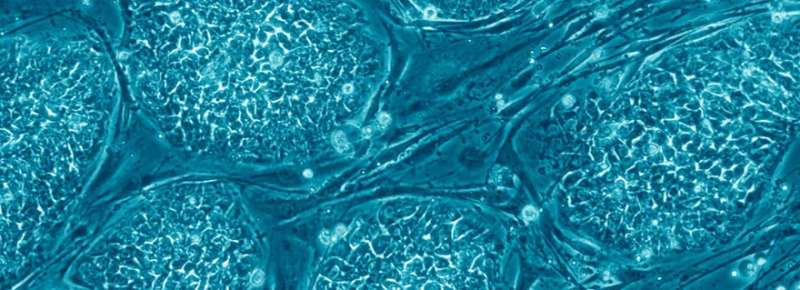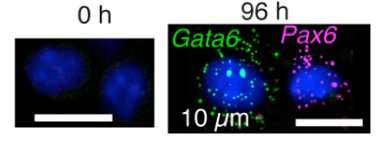Researchers reveal how stem cells make decisions

Embryonic stem cells have the remarkable ability to develop into any type of cell. On their way to become for example a liver or a heart cell, they must repeatedly decide between alternative developmental paths. How they make these decisions is largely unknown. An international team of biophysicists has now charted the decision-making process in unprecedented detail, watching the cells as they make up their mind. Publication in Nature Communications on 23 October.
Embryonic stem cells hold tremendous potential for medical applications, like the repair of diseased tissue or personalized drug screening. These applications require stem cells to be transformed into precisely defined mature cell types, which remains challenging. More often than not, a population of stem cells will grow into different kinds of cells, which hampers biomedical applications. For example, an assay that tests liver toxicity should not contain kidney cells. To understand and control the maturation process better, a team of scientists from Leiden, Utrecht and Boston charted the path from stem cell to mature cell types, one cell at a time.
RNA-sequencing
Leiden physicist Stefan Semrau and co-workers applied a revolutionary new method to embryonic stem cells: single-cell RNA-sequencing. This technique has the ability to measure the abundance and sequence of all RNA molecules in individual cells. The composition of RNA molecules is characteristic of a certain cell type—a genetic business card. Genes that are important in a particular cell type will be represented by many RNA molecules, while other genes are inactive.

Using RNA-sequencing the team found an intricate dynamical pattern. When they treated stem cells with retinoic acid—an important signaling molecule—all stem cells initially reacted in a similar way. After 24 hours, however, the cell population split up in two groups that persisted until the end of the 4-day experiment. In other words, the stem cells decided between two alternative cell types. The experiment revealed which proteins are involved in this process, which will help to understand cellular decision-making at the molecular level.
The new sequencing study is also an important step towards understanding embryonic development. This is because the splitting of an initially homogeneous population is the fundamental process by which all cell types in our body are created from a single, fertilized egg.
More information: Stefan Semrau et al. Dynamics of lineage commitment revealed by single-cell transcriptomics of differentiating embryonic stem cells, Nature Communications (2017). DOI: 10.1038/s41467-017-01076-4
Journal information: Nature Communications
Provided by Leiden University


















